Search Results
Fine Jewelry University Articles matching: “Jade gemstone”
Showing only FJU Article results. Click here to show all results.
Fine Jewelry University (Show All FJU Articles)
-
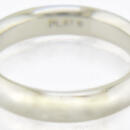
Platinum
… due to chlorine and other chemicals. These factors, along with its strength and white luster, have made platinum an increasingly popular choice for jewelry, either on its own or as the setting for diamonds and other precious gemstones. Platinum jewelry does not fade or tarnish and keeps its looks for a lifetime. Platinum’s purity makes it hypoallergenic and ideal for those with sensitive skin. All the platinum ever mined would fit in the average living room. Platinum is …
-
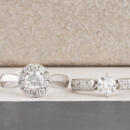
Anatomy of a Ring
… any bands or other rings you plan to wear next to the main ring? Head The head is the piece that holds the gemstone. Pronged heads are most common. The prongs are the little claws of metal that secure the stone. Most prong heads in rings …time and may need to be built up by a jeweler. When you are shopping, pay close attention to how the main diamond or gemstone is set. What style of head is used? What trade-offs are being made between security, design, and how much of the …
-
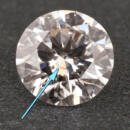
What Are Lab Grown Diamonds?
… from the rest of the gas and deposited on a wafer of diamond crystal which establishes the crystal structure as the gemstone grows layer by layer. You can learn more about how lab grown diamonds are made from our main article on the … becomes a fake. Most gem simulants are trying to imitate diamonds, but there are also simulants for other valuable gemstones (sapphires, rubies, etc.). Here are some of the more popular diamond simulants. Synthetic Rutile was introduced in …
-
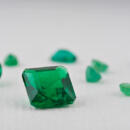
Gem in the Spotlight: Emerald
Springtime exudes life, full of bright colors and renewed energy. Emerald, May’s gemstone, captures this enthusiasm for life in rich elegance. This precious gemstone has been revered for over 4,000 years … other quartz varieties. The refractive index of emerald ranges from 1.57 to 1.58, making it a moderately refractive gemstone. Its specific gravity ranges from 2.65 to 2.75. One of the distinctive features of emeralds is that they often … to green than to any other color thereby making it easier on the eyes. Pliny said that emeralds were the only gemstones that delighted the eye without fatiguing it. In fact, Emperor Nero was said to wear a kind of emerald glasses to watch …
-
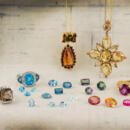
Gem in the Spotlight: Topaz
… the coating can be scratched and the gem ruined very easily. Mystic topaz comes in virtually any color from sunset orange, to violet, to green. These coatings can allow topaz to be any color of your preference. Topaz itself is a hard gemstone with a Mohs hardness of 8. Mohs hardness is a standardized metric of how difficult it is to scratch something. For reference, topaz is a bit softer than diamond which is a 10 and corundum (sapphire/ruby) which is a 9 on the scale. It …
-
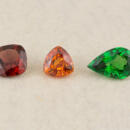
Gem in the Spotlight: Garnet
… midst of cold, white (valley fog) and at times stark surroundings are rewarded with one of the most varying birth gemstones…Garnet. Garnet’s pizzazz energizes the gloomiest day. Garnet varieties brighten the world in colors of yellow to … garnet lantern to navigate the Ark at night. The ancient world is full of praise for the carbuncle, the glowing red gemstone we now know as garnet. Early scientists named garnet from the Latin granatus, which means ‘seedlike’ because garnet …
-
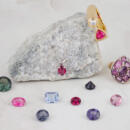
Gem in the Spotlight: Spinel
…, but now the entire color pallet has been opened up. Spinel is arguably the most overlooked and underappreciated gemstone of all time. Spinel was first made in a lab over 100 years ago when scientists who were trying to synthesize blue … found in. Because of how easily it can be created in a lab, synthetic spinel has been used to imitate many other gemstones (ruby, sapphire, tourmaline, zircon, etc.). In fact, the ubiquity of synthetic spinel may be part of the reason why …
-
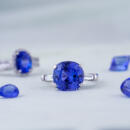
Gem in the Spotlight: Tanzanite
Beauty and rarity are two wonderful traits in a gemstone. Tanzanite has them both. In fact, it is estimated that Tanzanite is 1,000 times rarer than diamond. But, what makes… that isn’t heated and is still pretty enough for jewelry displays trichroism. Trichroism is an effect that causes gemstones to display different colors when viewed at different angles. Tanzanite in its raw form has three colors: blue, purple…has been heated by using a dichroscope. This is a tool that gemologists use to separate the pleochroic colors that a gemstone has. If there is a strong green component at any angle, then it likely has not been heated. The main factors that …
-
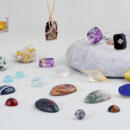
Gem in the Spotlight: Quartz
… at the title and knew). Quartz is one of the most common minerals on earth. Many quartz varieties are cut into gemstones, but some varieties are very rare. Some are ordinary like rock quartz, others are exotic like Drusy Quartz. Some quartz …, microcrystalline and cryptocrystalline. Within each of these broad categories, the different colors of the gemstone are given different names. Below is a quick list to help you get a better handle on the vast diversity of quartz. Before we …